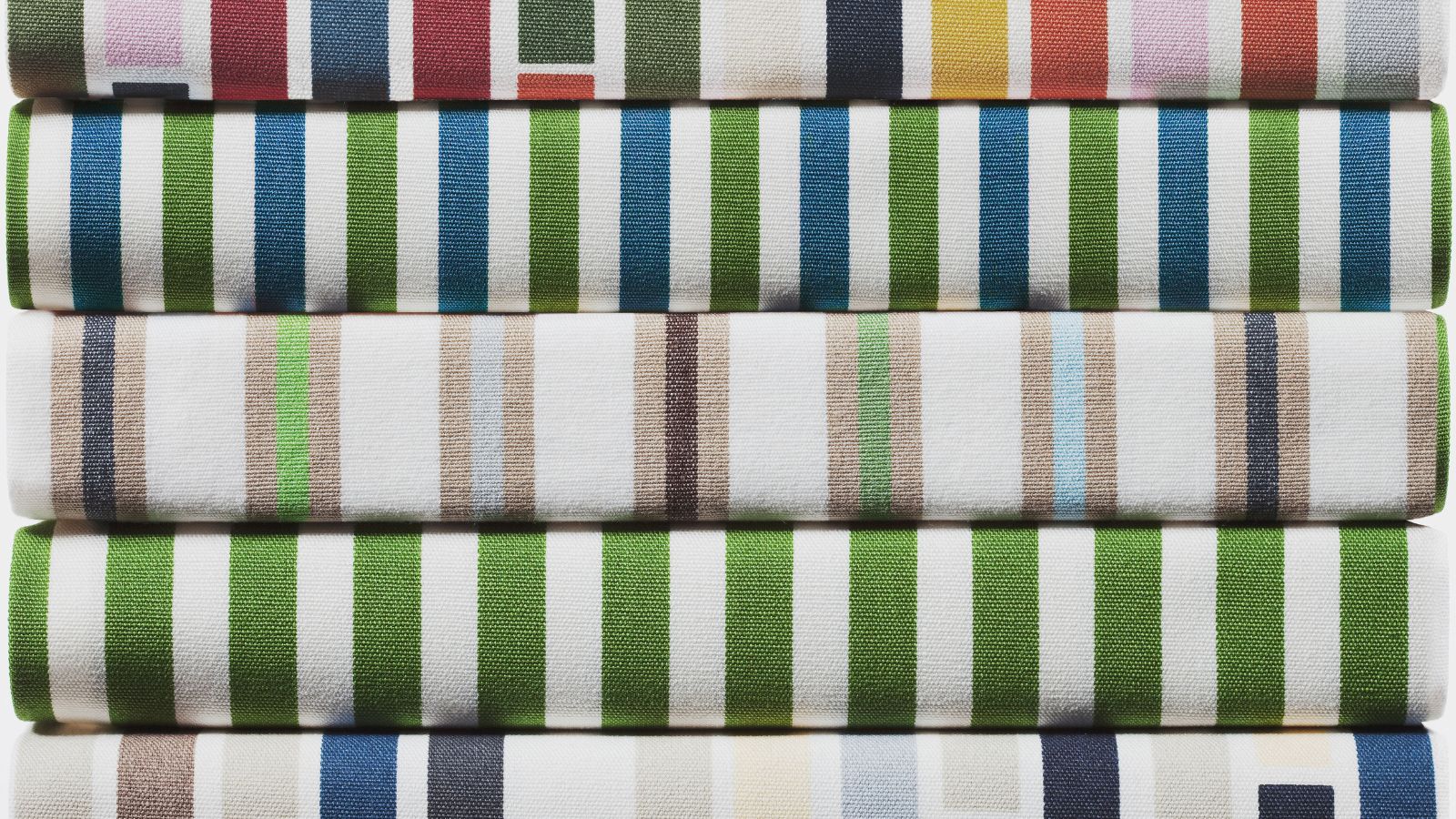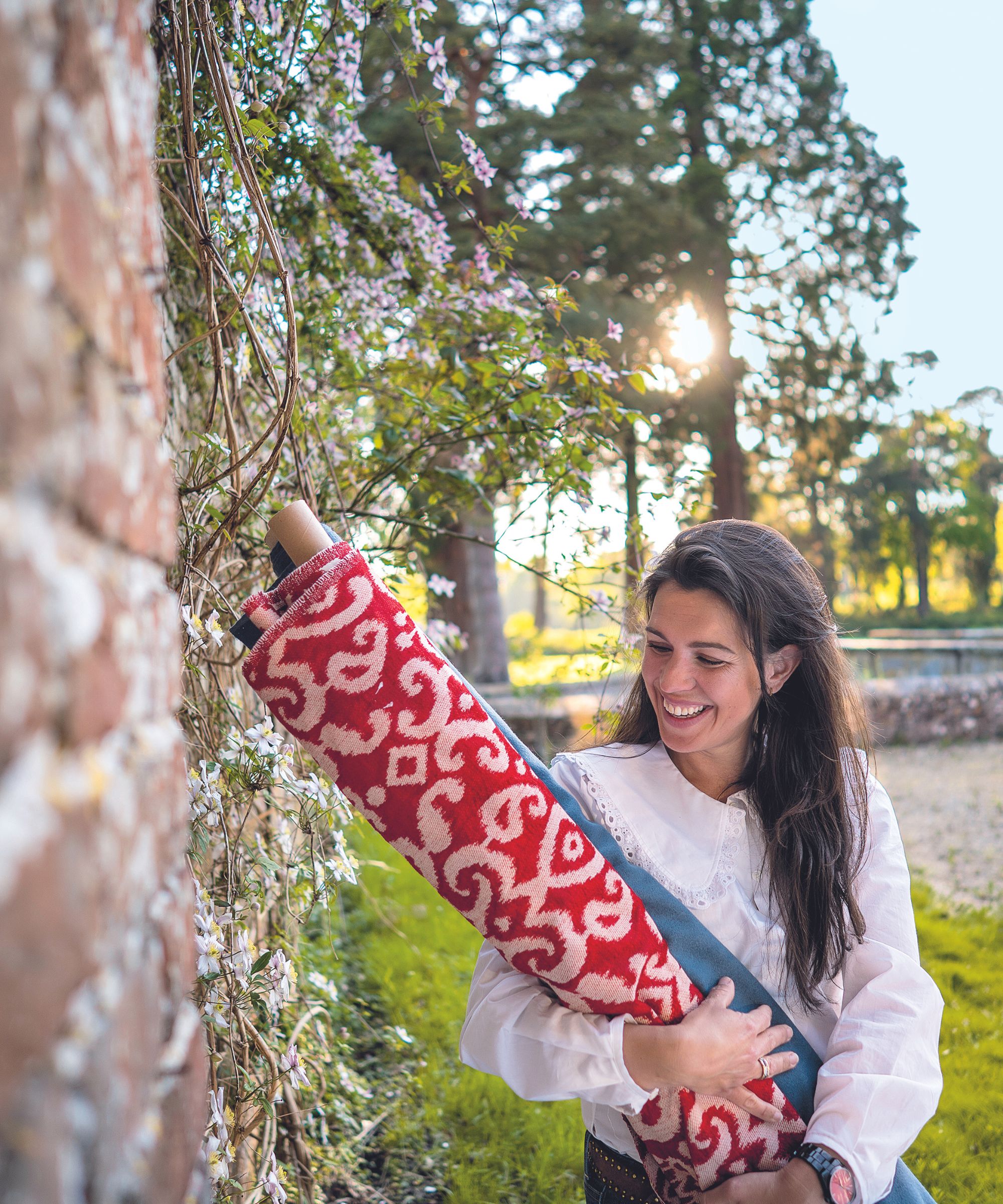Sustainable fabrics – the fibers to look for and questions to ask
Recycled textiles expert Jules Haines advises buying sustainable fabrics for your interiors project


Looking to shop for sustainable fabrics? Jules Haines, founder of The Haines Collection offers advice on how to shop sustainably for your home, particularly for fabrics and textiles.
'Opting for natural fibers should be the first step when it comes to looking at sustainable textiles,' she says. 'Man-made fabrics (polyester, nylon or acrylic) take decades or more to biodegrade; naturally grown ones do not. ‘You’ll know that at the end of their life, the fibers will decompose, and the process can remain circular.'

The Haines Collection set up by Jules Haines, is a pioneering platform for the resale of unwanted textiles, wallpaper, lights and accessories that would most likely be headed for landfill. In March 2022, the brand introduced Haines Curates, which brings together a curated community of eco-conscious designers and homewares that place environmental impact and waste reduction at the core of their business.
How to shop sustainable fabrics
From cotton to wool, this is what to buy and what to look for when researching sustainable fabrics for your decor project.
'Man-made fabrics can take decades or more to biodegrade; naturally grown ones do not,' says Jules.
1. Cotton
'As has been well publicized, cotton production uses a huge amount of water and cotton growers use a disproportionate 16% of the world’s insecticides on their crops,' says Jules.
'However, certified organic cotton is grown using methods and materials that have a low impact on the environment, with systems in place to replenish and maintain soil fertility, reduce the use of toxic pesticides and fertilisers and build biologically diverse agriculture.'
2. Wool
'Probably the most eco-friendly fiber of them all: 100% natural, biodegradable and renewable. It is easy to care for and also has natural fire-retardant properties.
Design expertise in your inbox – from inspiring decorating ideas and beautiful celebrity homes to practical gardening advice and shopping round-ups.
'Wool should come from suppliers that do not employ the mulesing technique; this is a controversial procedure of cutting flaps of skin from around a lamb’s breech and tail to help prevent parasitic infection.'
3. Linen
'This material is made from flax, which can be grown without fertilizers and planted in areas where most other crops cannot thrive. Flax can also be used in its entirety (seeds, oil and crop), meaning there’s no waste.
'This natural material is also biodegradable, as long as harsh chemicals are left out of the process.'
4. Check the source and if they are fit for purpose
‘Always ask where the fabrics were made,’ says Jules. ‘You will be surprised by how much you can lower your carbon footprint by shopping locally or from UK manufacturers.’
But it’s not always about the source of the textiles – think about how you use them, too. Will they stand the test of time?
‘For instance, don’t upholster a sofa in the center of a busy household with a linen that has a low rub count (also known as the Martindale count, which is an indication of a fabric’s durability).
'Be careful when using silk in a window that gets direct sunlight, as after a period of time sunlight will degrade the silk and the fibers will break.
'All purchases will have an impact on the planet, whichever route you take – it’s about choosing the best option as well as it being something you will love and cherish.’
What is an eco-friendly fabric?
Eco-friendly fabrics include wool, cotton and linen, as mentioned above. You can also look to fabrics made from bamboo, hemp, jute and corn fiber. Another way to shop eco-friendly fabrics is to look for secondhand fabrics or to upcycle and repurpose what you already at home.

Lucy Searle has written about interiors, property and gardens since 1990, working her way around the interiors departments of women's magazines before switching to interiors-only titles in the mid-nineties. She was Associate Editor on Ideal Home, and Launch Editor of 4Homes magazine, before moving into digital in 2007, launching Channel 4's flagship website, Channel4.com/4homes. In 2018, Lucy took on the role of Global Editor in Chief for Realhomes.com, taking the site from a small magazine add-on to a global success. She was asked to repeat that success at Homes & Gardens, where she has also taken on the editorship of the magazine.